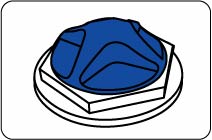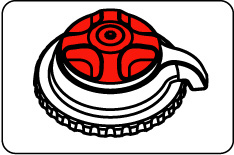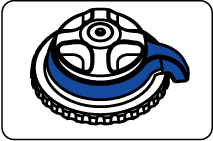|
|
Installing Your Fork | Before You Ride | Setting Sag | Adjusting Rebound | Locking Out the Fork | Service Intervals | Important Safety Information
|
|
travel |
F29 RL 120: 4.7 in./120 mm |
|
features/adjustments |
lockout, air spring pressure, rebound, uses 700c/29-inch wheels |
|
|
spring/damper type |
air/open bath |
|
|
intended use |
cross-country |
Be sure your fork is properly installed before proceeding. Clicking on the link above will take you to a new page. If your fork came pre-installed on your bicycle, continue to the next section.
Note: Do not use any solvents or de-greasers, as these products can cause serious damage to paint and anodized parts (upper tubes, knobs, steerers).
Do not spray water directly on the seal/upper tube junction. Do not use a high pressure washer on your fork.
You can also view a Flash video on Setting Sag.
To get the best performance from your fork, it is necessary to set and adjust sag. Generally, sag should be set to 15 25% of total fork travel.

Rider Weight | Air Pressure |
< 125 lbs. | 45 psi |
125 - 135 lbs. | 50 psi |
135 - 145 lbs. | 55 psi |
145 - 155 lbs. | 65 psi |
155 - 170 lbs. | 75 psi |
170 - 185 lbs. | 85 psi |
185 - 200 lbs. | 95 psi |
200 - 215 lbs. | 105 psi |
215 - 230 lbs | 115 psi |
230 - 250 lbs. | 125 psi |
Travel | XC/Race FIRM | All-Mountain PLUSH |
80 mm (3.50") | 12 mm (0.50") | 20 mm (0.75") |
100 mm (3.90") | 15 mm (0.62") | 25 mm (0.98") |
120 mm (4.70") | 18 mm (0.69") | 30 mm (1.19") |
140 mm (5.50") | 21 mm (0.81") | 35 mm (1.38") |
150 mm (5.90") | 23 mm (0.91") | 38 mm (1.50") |
Symptom | Remedy |
Too much sag | (+) air pressure in 5 psi increments |
Too little sag | (-) air pressure in 5 psi increments |
Excessive bottoming | (+) air pressure in 5 psi increments |
Harsh ride; full travel not utilized | (-) air pressure in 5 psi increments |
The rebound knob (shown below) is located on the top of the right fork leg, and has 12 clicks of adjustment. Rebound controls the speed at which the fork extends after compressing. Turning the knob clockwise slows down rebound; turning the knob counterclockwise speeds up rebound. As a starting point, turn the rebound adjuster knob all the way clockwise (full in) until it stops, then turn counterclockwise (out) 6 clicks.

|
Knob Setting |
Setting Description |
Tuning Tips |
Setup Tips |
|
|
Slow Rebound |
Too slow and your fork will pack down and ride harsh. |
If you increase your spring rate or air pressure, you will need to slow down your rebound |
|
6 (Factory setting) |
Average Rebound |
|
|
|
|
Fast Rebound |
Too fast and you will experience poor traction and wheel hop. |
If you decrease your spring rate or air pressure, you will need to speed up your rebound setting. |
The blue compression lockout lever is located below the red rebound adjuster knob. It allows the rider to close the compression damping circuit in the fork. This keeps the fork at the top of its travel, making it harder to compress.
Rotate the lever fully clockwise to lockout the fork. This position is useful in climbing and sprinting situations, but will sag with the riders weight. The fork will "blowoff" in the event that a big hit is encountered with the fork locked out.
To unlock the fork, simply rotate the lever fully counterclockwise.

Note: The fork may cycle a couple of times after enabling lockout. Once complete lockout is achieved, the fork may continue to move 3 - 5 mm. This is normal and does not affect performance.
![]()

Bushing Technology & Inspection | Seals & Foam Rings | Control Direction | Oil Volumes | Structural Inspection | Dropout Thickness Inspection | Torque Values | Unit Conversion | Suspension Tuning Tips | Using the Pump | Important Safety Information | Service Intervals | Contact FOX Service | Warranty Information | FOXHelp Service Web Site
Copyright © 2010
FOX Factory Inc.